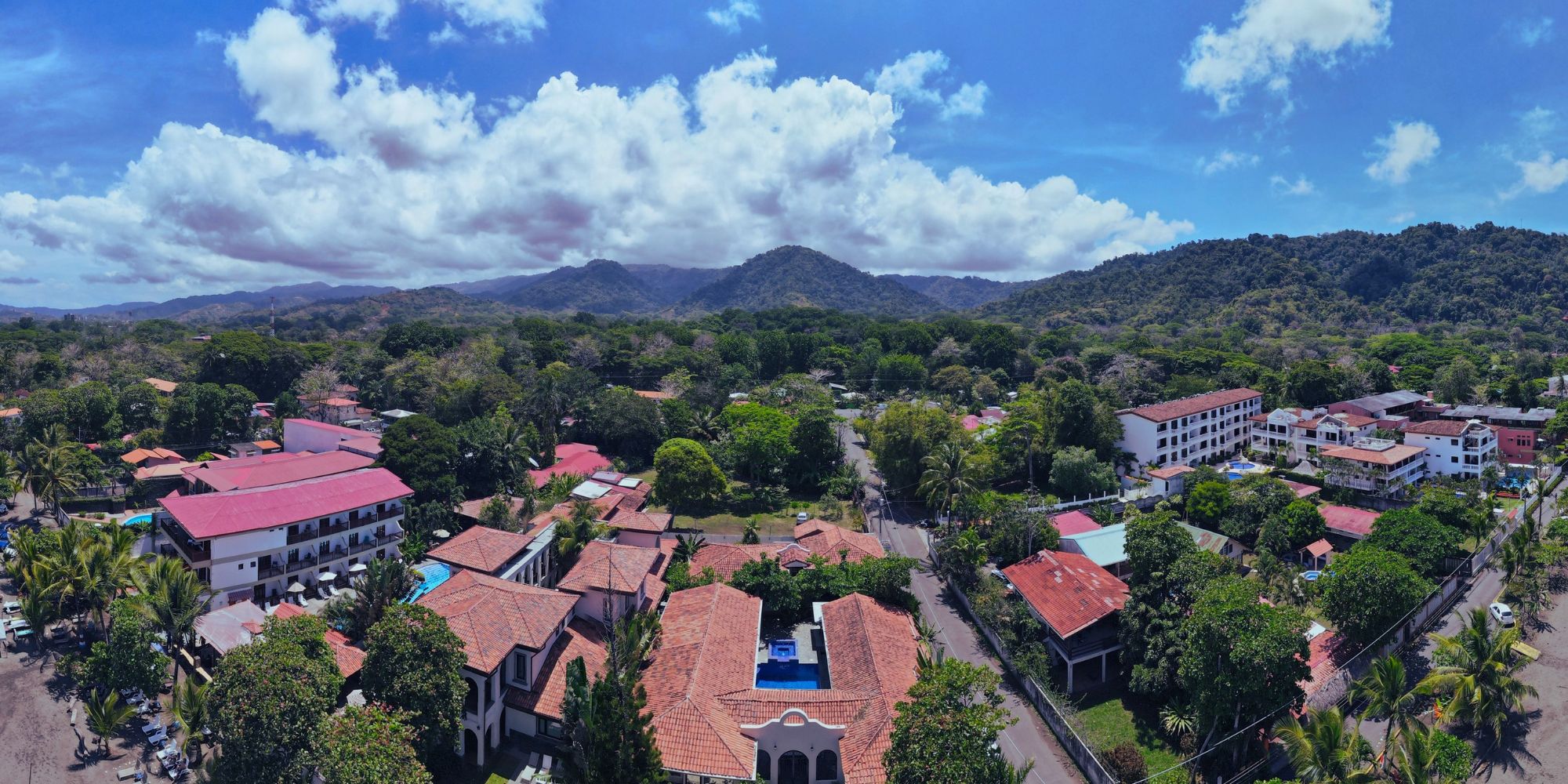Planning a trip to Costa Rica? Understanding the local charging outlets and electricity standards is crucial for ensuring your devices stay powered up during your adventure. This guide provides everything you need to know about Costa Rican charging outlets, from voltage requirements to adapter needs, ensuring a smooth and stress-free travel experience.
As you prepare for your journey to the beautiful landscapes of Costa Rica, it's essential to familiarize yourself with the country's electrical infrastructure. Whether you're charging your phone, laptop, or other electronics, knowing the specifics of Costa Rica's power outlets can save you from unpleasant surprises.
This comprehensive guide will walk you through every detail you need to know about Costa Rica's charging outlets. From the types of plugs used to voltage requirements and adapter recommendations, we’ve got you covered. Let's dive in!
Read also:Jennifer Rauchet Children A Comprehensive Insight Into Her Family Life
Table of Contents
- Introduction to Costa Rica's Electrical System
- Plug Types in Costa Rica
- Voltage Standards in Costa Rica
- Do You Need a Power Adapter?
- Voltage Converters: When Are They Necessary?
- Where to Find Charging Outlets in Costa Rica
- Practical Tips for Charging Devices
- Common Issues with Charging Devices
- Eco-Friendly Electricity in Costa Rica
- Conclusion and Final Tips
Introduction to Costa Rica's Electrical System
Costa Rica is renowned for its stunning natural beauty, eco-friendly initiatives, and vibrant culture. However, understanding the country’s electrical system is just as important as knowing its tourist attractions. The electrical infrastructure in Costa Rica operates under specific standards that travelers must be aware of to avoid any inconvenience.
The country uses a 110-volt electrical system, similar to the United States and Canada. This means that most electronic devices from North America will function without issue in Costa Rica. However, it's always wise to double-check your device's compatibility with the local voltage.
Additionally, Costa Rica is a leader in renewable energy, with a significant portion of its electricity generated from hydroelectric, wind, and geothermal sources. This commitment to sustainability makes Costa Rica an inspiring destination for eco-conscious travelers.
Plug Types in Costa Rica
In Costa Rica, the most commonly used plug types are Type A and Type B, which are standard in North America. These plugs have two flat prongs (Type A) or two flat prongs with a grounding pin (Type B).
Understanding Plug Types
Here’s a quick overview of the plug types you'll encounter:
- Type A: Two flat parallel pins, commonly used in the USA and Canada.
- Type B: Two flat parallel pins with a grounding pin, also widely used in North America.
Most hotels and public facilities in Costa Rica are equipped with these plug types, making it convenient for travelers from North America. However, if you're coming from a country that uses different plug types, you may need a travel adapter.
Read also:Alex Wagner Illness A Comprehensive Insight Into Her Health Challenges
Voltage Standards in Costa Rica
Costa Rica operates on a standard voltage of 110 volts, which is identical to the voltage used in the United States and Canada. This compatibility means that most electronic devices from these regions will work seamlessly in Costa Rica without the need for a voltage converter.
Checking Your Device's Voltage Compatibility
Before traveling, check the voltage requirements of your devices. Most modern electronics, such as smartphones, laptops, and tablets, are dual-voltage, meaning they can operate on both 110V and 220V. Look for the voltage information on your device's power adapter or label. If it reads "100V-240V," your device is compatible with Costa Rica's electrical system.
However, if your device is designed for 220V only, you'll need a voltage converter to avoid damaging your electronics.
Do You Need a Power Adapter?
For travelers from North America, a power adapter is generally not necessary, as the plug types and voltage standards are the same. However, if you're visiting from a country with different plug types, such as Europe or Asia, you will need a travel adapter to connect your devices to Costa Rican outlets.
Choosing the Right Adapter
When selecting a travel adapter, ensure it supports both Type A and Type B plugs. Some adapters also come with built-in USB ports, which can be convenient for charging multiple devices simultaneously.
Additionally, consider purchasing a surge protector adapter if you plan to use sensitive electronics like laptops or cameras. This will protect your devices from voltage fluctuations that may occur in some areas.
Voltage Converters: When Are They Necessary?
While most modern electronics are dual-voltage, some devices, such as hairdryers, curling irons, or electric shavers, may only support 220V. If you plan to bring such devices, a voltage converter will be essential to prevent damage.
Types of Voltage Converters
There are two main types of voltage converters:
- Step-Down Converters: Convert 220V to 110V, suitable for devices designed for 110V.
- Step-Up Converters: Convert 110V to 220V, ideal for devices designed for 220V.
Choose a converter that matches your device's voltage requirements and wattage needs. Always refer to the device's manual for accurate specifications.
Where to Find Charging Outlets in Costa Rica
Access to charging outlets in Costa Rica is generally convenient, especially in urban areas and tourist destinations. Hotels, cafes, restaurants, and airports often provide outlets for travelers to charge their devices.
Outlet Availability in Different Locations
Here are some common places where you can find charging outlets:
- Hotels: Most hotels offer in-room outlets and some even provide USB charging ports.
- Airports: San José’s Juan Santamaría International Airport and Liberia’s Daniel Oduber International Airport have numerous charging stations.
- Cafes and Restaurants: Many establishments have outlets available for customer use, though it’s polite to ask first.
- Tourist Spots: Some popular tourist sites offer charging stations, especially in visitor centers or nearby facilities.
It’s always a good idea to carry a portable power bank as a backup, especially when exploring remote areas where outlets may be scarce.
Practical Tips for Charging Devices
Here are some practical tips to ensure your devices stay charged during your trip to Costa Rica:
Essential Charging Accessories
- Carry a universal travel adapter with multiple ports for convenience.
- Pack a portable power bank with sufficient capacity to charge all your devices.
- Bring extra charging cables and consider waterproof options if you plan to visit rainy areas.
Power Management Strategies
To maximize your device's battery life, consider the following strategies:
- Enable power-saving mode on your devices.
- Turn off unnecessary features like Bluetooth, GPS, and Wi-Fi when not in use.
- Lower your screen brightness to conserve battery.
Common Issues with Charging Devices
While Costa Rica's electrical system is generally reliable, travelers may encounter some common issues related to charging devices. Understanding these challenges can help you avoid potential problems.
Voltage Fluctuations
In some rural areas, voltage fluctuations may occur, which can damage sensitive electronics. Using a surge protector adapter can safeguard your devices against such issues.
Outlet Availability
In remote or less touristy areas, the availability of charging outlets may be limited. Always carry a power bank to ensure you have a reliable power source on the go.
Eco-Friendly Electricity in Costa Rica
Costa Rica is a global leader in renewable energy, with over 98% of its electricity generated from renewable sources. The country primarily relies on hydroelectric, wind, geothermal, and solar power to meet its energy needs.
Benefits of Renewable Energy
This commitment to sustainable energy not only reduces the country's carbon footprint but also provides a stable and clean power supply for residents and visitors alike. As a traveler, you can feel good knowing that your device is being charged using eco-friendly electricity.
Conclusion and Final Tips
In conclusion, understanding Costa Rica's charging outlets and electrical system is essential for a hassle-free travel experience. With its compatibility with North American standards and commitment to renewable energy, Costa Rica offers a convenient and sustainable environment for charging your devices.
Here are some final tips to keep in mind:
- Verify your device's voltage compatibility before traveling.
- Pack a universal travel adapter and a portable power bank for convenience.
- Be mindful of voltage fluctuations in rural areas and use a surge protector if necessary.
We invite you to share your thoughts and experiences in the comments below. If you found this guide helpful, please share it with fellow travelers and explore our other travel resources for more insights.
Happy travels and safe charging in Costa Rica!


